Popular Articles
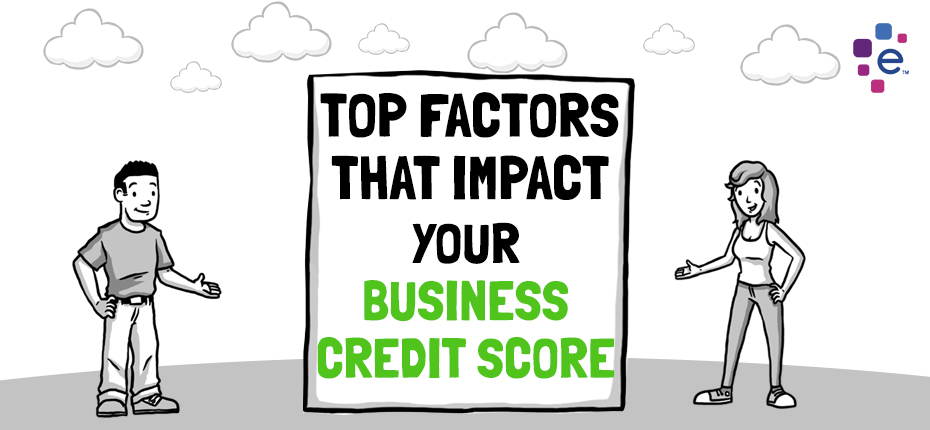
In this business credit education post we cover the top factors that impact business credit your business credit score
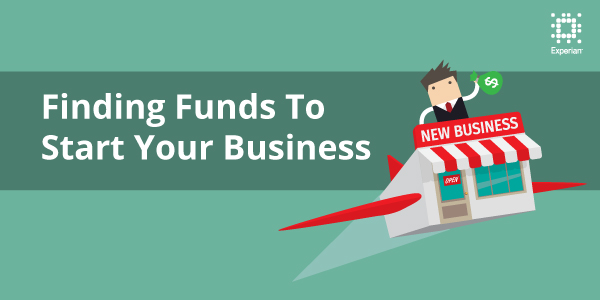
In celebration of National Small Business Week, today’s Guest Post comes from small business influencer Barbara Weltman, who shares insights on how to get money to start a business. Barbara Weltman (@BarbaraWeltman) is an attorney, a prolific author with such titles as J.K. Lasser’s Small Business Taxes and J.K. Lasser’s Guide to Self-Employment, and a trusted advocate for small businesses and entrepreneurs. She is also the publisher of Idea of the Day® and Big Ideas for Small Business® at www.barbaraweltman.com as well as host of a monthly radio show. She’s been named one of the 100 Small Business Influencers five years in a row. It takes money to start a business and get your idea off the ground. Depending on the nature of your business, you may require only a little bit of cash—your seed money—or you may need considerable funds. You can borrow money (debt) or find investors (equity) to meet your capital requirements. Here are some funding options to explore. Self-funding According to the National Venture Capital Association (NVCA), 82 percent of all businesses start with the owner’s personal resources. These can come in a variety of ways: Personal savings. This is the best source of capital because there are no strings attached—no repayments, no interest cost, no timing issues. Credit card borrowing. Using personal credit cards to start a business is pretty common. Sergy Brin and Larry Page did this to start Google in the 1990’s. The biggest downside: the high interest rate. Home equity borrowing. If you own a home that’s worth more than your mortgage, you can borrow with a home equity loan (the lender sets the borrowing limits). The downside: If the business fails and you can’t repay the loan, you could lose your home. Caution: Don’t dip into your 401(k) and IRAs to start businesses. Doing this not only costs you in taxes up front, but if the business fails, you lose your retirement savings. Check out our interview with Christina Edel on taking on business debt >> Loans and lines of credit Don’t expect to walk into your neighborhood bank to get a loan for starting your business. Even SBA loans, which are commercial loans guaranteed by the U.S. Small Business Administration, usually aren’t available for startups. If you have an excellent credit score—680 or better—you may qualify for a personal loan, but interest on such borrowing is high, even in today’s low interest environment. With a good credit score, your business may qualify for a line of credit; your personal guarantee can swing this financing. You only pay interest on the portion of the line you draw upon. For example, if you have a $50,000 line of credit and use $20,000, you pay interest on $20,000. NVCA reports that 41 percent of startup funding comes from loans and lines of credit. Family and friends A rich uncle or a fabulous friend may help you get started by either investing in your business or giving you a loan, as about a quarter of all business startups do. But ask yourself whether your relationships will sour if the business doesn’t succeed and your investor or lender loses money. Crowdfunding This relatively new way to find capital for a business can be done in a variety of ways: mere contributions (with no repayment by you), loans as discussed earlier, or, most recently, equity crowdfunding. All together this source of funding from strangers online accounts for about 3 percent of startup funds, according to the NVCA. Conclusion These are just the most common ways to find the cash to get started. You don’t have to choose just one resource; you can combine your options to raise the amount of money required. For example, you may have your friend invest some money and use your personal credit card to buy equipment or other items needed to open your doors for business. Just make sure you know what you’re getting into so you can succeed.
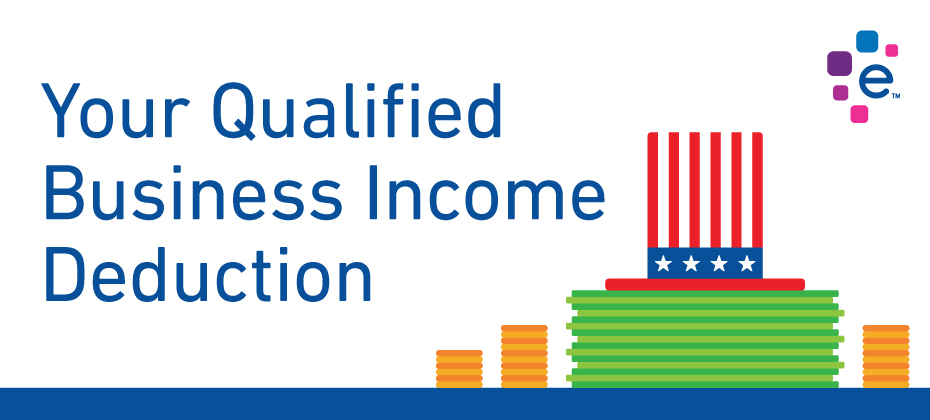
The IRS recently released more details about the Qualified Business Income Deduction, a new tax regulation that will impact small business owners. In this guest post, leading author and tax expert, Barbara Weltman shares first impressions on the regulation and potential impact for small businesses. You can find more blogs by Barbara on her blog Big Ideas for Small Business. If you own a pass-through entity—sole proprietorship, partnership, limited liability company, or S corporation—you may be eligible for a new tax deduction. It is a significant tax reduction for business owners who qualify for it. But it isn’t simple because numerous limitations and acronyms come into play. The following is a brief introduction to the qualified business income deduction. Overview Referred to as the Section 199A deduction (the section in the Tax Code for it), the qualified business income (QBI) deduction runs from 2018 through 2025. You don’t have to expend any capital or take any special action; if you qualify for the deduction you get it. But the bad news is that there’s new terminology and calculations for limitations on the deduction which can be daunting. The deduction does not reduce your business income and does not reduce your net earnings for self-employment tax if you’re self-employed. It does not reduce your gross income as does other business-related expenses, such as retirement plan contributions on your behalf, health insurance for yourself, and one-half of self-employment tax. The deduction comes off your adjusted gross income in the same way as the standard deduction or itemized deductions (there’s a special line for the QBI deduction on Form 1040), effectively reducing the tax rate you pay on your business profits. For example, if you are in the 32% tax bracket and qualify for the deduction without any limitations, the effective tax rate on your QBI becomes 25.6%. What is QBI? The deduction is based on the amount of your qualified business income. This is essentially your profits from a pass-through trade or business. However, QBI does not include certain items that you do factor into your net income for determining what you pay income tax on. Items excluded from QBI are: Capital gains and losses (including Section 1231 gains) Dividend income Interest income Reasonable compensation paid to S corporation owner-employees Guaranteed payments to partners for services rendered to the business What is the QBI deduction? If your taxable income is no more than $157,500 if single or $315,000 if married filing jointly, then your deduction is 20% of QBI. The deduction cannot exceed your taxable income minus any capital gains. For example, if you are a sole proprietor with a net profit of $90,000 (and no excluded items) on your Schedule C and your taxable income is $100,000 (no capital gains), your QBI deduction is $18,000 ($90,000 x 20%). What limitations apply? Once your taxable income is higher than the taxable income threshold for your filing status, then various limitations come into play. The exact formula for determining the deduction (there are special rules for income from REITs and publicly traded partnerships that is not explained here) is the lesser of: 20% of your QBI, or The greater of (a) 50% of W-2 wages or (b) the sum of 25% of W-2 wages plus 2.5% of the unadjusted basis immediately after acquisition (UBIA) of qualified property. In addition to the W-2 limitation and the property limitation, there is a special limitation for a specified service trade or business (defined below). Only a percentage of QBI, W-2 wages, and the unadjusted basis of property can be taken into account. Once an owner of a specified service trade or business has taxable income over $207,500 if single, or $415,000 if married filing jointly, then this limitation means no deduction can be claimed. What are the special terms to know? There are a number of special terms you need to know in order to figure the deduction: W-2 wages. These are wages reported on W-2s to employees (including wages to S corporation owner-employees), plus elective deferral contributions to 401(k)s and similar plans and certain deferred compensation. Specified service trades or businesses (SSTBs). These are any trade or business involving the performance of services in the fields of health, law, accounting, actuarial science, performing arts, consulting, athletics, financial services, brokerage services, or any trade or business where the principal asset of such trade or business is the reputation or skill of one or more of its employees or owners (a catchall category). Architecture and engineering are specifically not included in the list of fields. Fortunately, the IRS has narrowly construed the meaning of the catchall category so that the skill or reputation of an owner will be an SSTB only if the person receives payment for endorsing products or services, licensing the taxpayer’s images, or receiving fees for media appearances. For instance, a chef who owns restaurants and also endorses a line of cookware, only the income from the endorsement will be treated as an SSBT; the income from the restaurants won’t be tainted and subject to the SSBT limitation. Unadjusted basis immediately after acquisition (UBIA) of qualified property. This is essentially the cost of depreciable tangible property as of the date it’s placed in service. So if your sole proprietorship buys a $10,000 machine and begins to use it on March, 1, 2018, you have UBIA of $10,000, even if you write-off the entire cost on your 2018 return. Conclusion If you think the QBI deduction sounds complicated, then you are correct. Fortunately, the actual computation of the deduction is done automatically by software. The important concepts to understand are the overall landscape of the deduction and the new terms that come into play. An upcoming post will provide more guidance on grouping and splitting businesses and other aspects of this complicated but very important deduction. Stay tuned! Attend our webinar
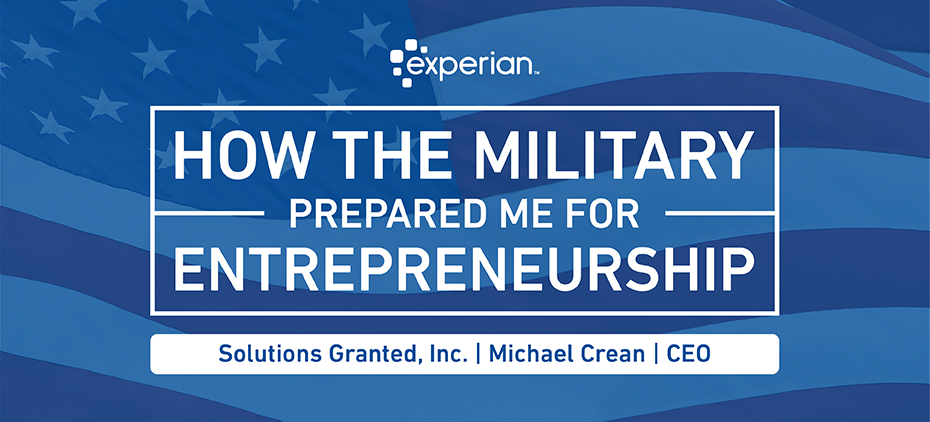
For the month of May, as we head into Memorial Day, the Small Business Matters blog will feature a series of posts highlighting military veterans who went into business for themselves. We’ll ask them about making the transition from military to small business, what challenges they faced, and how their career in the service prepared them to run their own small businesses. Throughout this interview series, it’s become obvious that veteran entrepreneurs, or vetrepreneurs, seem to possess a few similar traits. Whether these veterans were born with these qualities, they were instilled during childhood or they honed them during their active duty service is still to be determined. Veteran entrepreneurs are resourceful leaders and seem to readily adapt to life as a business owner. An Army veteran who recognized his entrepreneurial spirit in high school and needed a job after transitioning from the military, shares his self-described, “dumb luck” story with us. Micheal Crean’s first taste of owning a business was in junior high school. He would buy Little Debbie snacks and sell them to his friends. His parents worked for 30 years in a GM factory, doing the same job every day, something Crean described as “monotonous”, with no complaints. They took their children on family vacations and allowed them to play whatever sport they dreamed. He looked up to them, their persistence and tenacity to do whatever it took to take care of their family. After spending 9 years in military – 4 years at Ft. Bragg’s 82nd Airborne Division on special assignment – Crean felt tired of not being home for his own family. He would go on a 15-month deployment, leaving his wife and baby and come home to a “walking, talking child”. He imagined, after seeing the globe and many different points of view, that he’d do something with his life. He ended up doing something he never imagined. “I had to make a decision of what was more important to me.” What did you like most about serving in the U.S. Military? “The ability to work on a global level protecting those who could not protect themselves.” What inspired you to make the transition to entrepreneurship? “If it wasn’t for kids, I wouldn’t have been out of the Army. I served and now I wanted to be a dad. It’s kind of a story of dumb luck and needing a job. I interviewed with a company who hires veterans in the DC area. They asked me if I knew anything about computers. I knew I could learn anything I put my mind to… but I also get bored really easily. The government contracting world puts you in a box and you do that job for as long as that contract goes on. This was around 1999. I decided to step out into commercial space. I was valuable because of my leadership qualities. I found myself trying to stay in front of the dot com failure wave. It caught up with me. I was mad and disappointed in myself because I’d given up a military career and now I was on unemployment. A general contracting company offered me a job to tear things down. At the same time, a good friend who worked at collection agency asked me to come build computers and network for them. Another person who was a VC said their full time IT guy left and asked me if I would do it part time. I would do whatever it took to feed my family. My friend at the VC company was doing textile cleaning for high end homes and the White House. Someone wanted me to help build a network. That was around 2001 and it just went on from there. “ Michael Crean started Solutions Granted in 2001 in response to the need for information technology and information security, or cybersecurity, expertise. As someone who fell into the business, he credits his adaptability and resilience with keeping his business going, even through the recession. Solutions Granted helps businesses in many markets and government entities with IT security but also develops new solutions as needed in the ever-changing digital landscape. What skills from your military career do you apply most often in your business? “Logical thinking, crisis management, effective leadership… The things I did in the military - not having running water or eating a meal that comes from a brown plastic bag – taught me to get creative. As a business owner, that really lets me know what’s important in life. I don’t take things that seriously because I know what the military goes through. In my business, what we’re doing is important but no one’s going to die today. The military gave perspective. And adaptability! The military taught me that! How to adapt and overcome in the face of adversity. Entrepreneurs need to have this too. Our business model has changed a couple times through necessity.” Did you access Government programs to launch your business such as SBA loans? “No. No small business loans. No mentors for me. The only idea I had on how to run a business was, to be honest, honorable, ethical, and offer a good service. We’re self-funded. We never needed business loans. We did use lines of credit to do what we do. Maybe my business would be different if I did that. We’ve been reinvesting in our company along the way. Hiring and growing at a measured pace. I learned the lesson, ‘take care of your soldiers.’ We take care of our employees. One of the largest expenses is healthcare. I pay 100% of my employee’s benefits – and for an employee who’s been with us over 10 years, for his wife and kids too.” What is the greatest reward in being an entrepreneur? “Being around to affect my employees' lives and watching their families grow and prosper. The military taught me, ‘it’s our own free will to say yes’. When you set out to start your own business you must remember that you chose this. It wasn’t forced on you, you chose this. I have three grown daughters and two younger children at home. My oldest daughter started working for me after she graduated college. She runs accounts receivable, order management and accounts payable. I get to recreate time with my daughter, time I lost during deployments. I’m almost 18 years into this. One employee has been with me for 10 years, since age 18. How does life get any better? When I joined the military, I wanted to make a difference. I wanted to leave something for my children, protect those freedoms and enjoy being a kid. I can continue to do this because cybersecurity is such a danger to businesses out there. I guess I’ve traded one battlefield for another.” Is there anything else you’d like to share? “Be passionate about something and be good at what you do. Stop worrying about what’s happening around you to others. When a door opens, don’t be afraid to walk in. The unknown could be the greatest level of success you could not have predicted.”
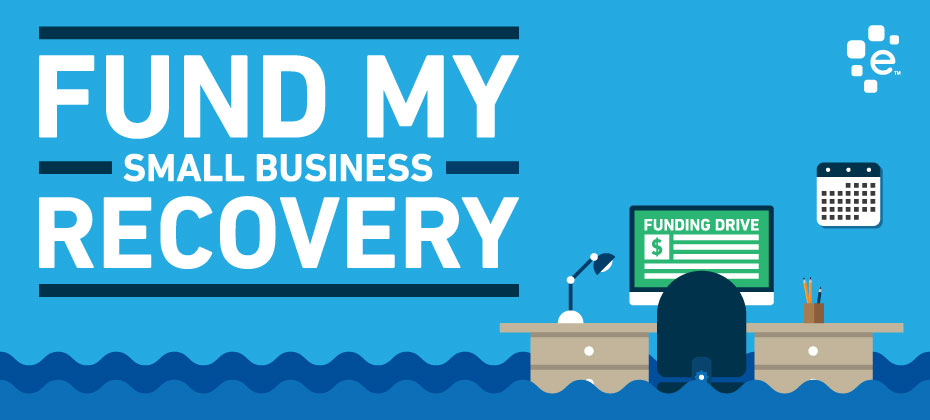
In the aftermath of Hurricanes Harvey and Irma, news outlets reported the FEMA statistic that 40% of small businesses never recover after a disaster. With 74% of small businesses closed after Hurricane Sandy, a 2015 Nationwide Insurance survey stated that 75% of small businesses still don't have a disaster plan in place. For overwhelmed small business owners, the possibility of a natural disaster may be a low priority compared to keeping customers happy and the bills paid. When an unfortunate and unplanned disaster strikes, they have to be creative when putting their lives and their businesses back in order. Savvy business owners who prepare in advance can usually mitigate potential damage to their business by being prepared and activating their business continuity plan. Small Business Disaster Planning With natural disasters, from hurricanes, flooding, tornadoes, earthquakes, or wildfires, there is a potential loss of: Office premises including equipment, supplies, furniture, and more. Records, paper or digital, that are necessary to keep the business running. Any goods or supplies needed to sell goods or services to customers. Employees' homes and the likelihood of their return to work. Suppliers or distributors who are unable to reach your place of business. Customers who may do business elsewhere if they are unable to reach your business. Office equipment and the like can be replaced eventually, but company and accounting records cannot. The U.S. Small Business Administration has created a Record Keeping for Small Business Guide to assist with the necessary records, such as contracts, licenses, leases, personnel information, and accounting records, for rebuilding your business. FEMA (Federal Emergency Management Agency) also has a Small Business Preparedness website for disaster planning. Helpful tips include storing records in the cloud, creating a threat analysis, purchasing business insurance, and the development of a continuity plan to include communication with employees, vendors and suppliers. The goal is to get back online as soon as possible so the loss of customers is minimal. Filling the gap Many business owners are finding out that their business insurance will only cover so much, and there is a significant gap between what is paid out in claims and what is needed. So many are forced to think up creative solutions to getting their businesses back online by borrowing from friends, family and investors. Entrepreneurs familiar with innovative financing options of startup capital are beginning to turn to relying on crowdfunding when disasters occur. Crowdfunding for Small Business Recovery Crowdfunding is a familiar source of capital to entrepreneurs with new or growing businesses. Many entrepreneurs relied on sites such as Kickstarter or Indiegogo to raise funds and a potential audience for their service or product. The 2017 University of Chicago Alternative Finance Benchmarking Report found that while equity-based crowdfunding decreased 7% last year, "Donation-based Crowdfunding grew by 60%, generating $224 million in 2016." The same report noted that over the past 3 years, donation-based crowdfunding has increased by 40%. This is good news to entrepreneurs who are also using crowdfunding to help raise funds after an unexpected natural disaster. Ashley Freeman, with Handy Ma'am home improvement services in Houston, TX, relied on Go Fund Me to help with her recovery in the aftermath of Hurricane Harvey. Ashley ran a campaign to replace tools and supplies that were damaged in the storm. Her goal was met but she's still recovering, "Go Fund Me was a great head start to getting back to where I need to be," says Ashley. "I'm so thankful for knowing so many people care as much as I do when other people are in need." Kiva, a non-profit organization dedicated to raising funds for entrepreneurs in 80 countries, is another crowdfunding platform being used by those affected by the September 2017 hurricanes. Jonny Price, a senior director with Kiva U.S., is proud of the work they're doing to support small businesses. "At Kiva, our aspiration is to leverage the generosity of our 1.6 million global lenders to expand financial access for entrepreneurs deemed too risky or expensive to serve by conventional lenders. Supporting small businesses hit by natural disasters like Hurricanes Harvey, Irma and Maria is one powerful and relevant example of how we hope to meet that aspiration. This loan to Matilsha in Puerto Rico was funded recently by 358 Kiva lenders. We hope that, through long-term reconstruction efforts, Kiva's sustainable lending model can complement the heroic work of more donation-based first responders like the Red Cross." Recovery Doesn't Have to be a Disaster 2017's hurricanes and wildfires have unfortunately put business owners on task to prepare for a worst-case scenario. FEMA and the U.S. Small Business Administration have created online guides for helping small businesses recover, and will also help financially through low interest loans. While businesses and residents await their turn in securing financing for rebuilding, more entrepreneurs and business owners are turning to alternative sources of financing to get back to the business of serving customers.

One simple way for a small business to create a mailing list and print a database is by using Microsoft Excel. Here are some simple steps for building and printing your mailing list in Excel: Experian also has an easy-to-use small business mailing list builder tool. Once you've built your list, you can easily export it in Excel (or any other) format. Step 1: Open Excel Step 2: Type the names of your data labels in the first row (e.g. First Name, Last Name, Address 1, Address 2, City, State, and Zipcode): . Step 3: Type or paste in your customer or lead list directly into Excel. Step 4: Save your mailing list. Step 5: Open a MS Word document Step 6:Go to the Mailings Menu > Start Mail Merge >Step by Step Mail Merge Wizard If you have an older version of MS Excel, you can access a similar wizard with this by selecting: Tools > Letters and Mailings > Mail Merge Step 7: Choose how you want to print your mailing list. You can choose to print letters, envelopes, directory, etc. In this example, we will print address labels for a direct mail campaign so I'm selecting labels. After making a selection, click on "Next: Starting document" at the bottom. Step 8: Click on "Label Options" Step 8: Select the Label Vendor you will be using to print your labels. Step 9: Click on "Select Recipients" Step 10: Select "Browse" to find your mailing list excel spreadsheet. Step 11: Select "Ok" when you get the "Select Table" window. Step 12: You will get an option to remove anyone on your mailing list that you don't want to include -- and then press OK. Step 13: Arrange your labels on the label or document you are working with. Step 14: Save, Update All Labels, and Print.
